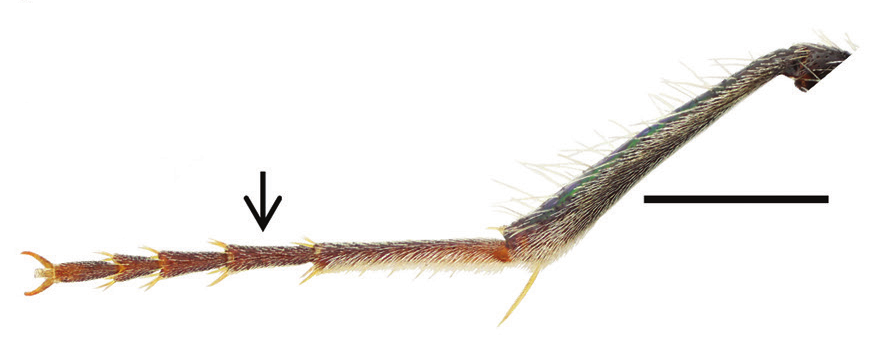Chrysis westerlundi
- Innhold
- Diagnosis
- Distribution
- Biology
- Remarks
Diagnosis
Figure 171
Hindleg (arrow indicating second tarsomere): C. westerlundi ♀. Scale 1 mm.
Length 7–9 mm.
The species differs from other North European species of the C. succincta group by its characteristic colouration: the head and mesosoma are completely dark blue or almost black dorsally in the female and green blue in the male. The metasoma is dorsally red in both sexes and anteriorly greenish in the male. The metatarsus is long, the second tarsomere is at least 3.5 times as long as broad (Fig. 171). Superficially, the species can resemble similarly coloured species of the C. ignita group, but the two central apical teeth are close to each other and extend further posteriorly than the lateral teeth (as in Fig. 78). Also the black spots of S2 are large and not separated by a metallic central line.
Distribution
Finland. Very rare, only eight specimens (6 females and 2 males) are known.
West Palearctic: the species has been found only from Finland and Russian Fennoscandia (Paukkunen et al. 2014).
Biology
Habitat: sparsely vegetated sandy areas. One specimen was caught with a Malaise trap in a bog.
Flight period: mid-June to early August.
Host: unknown.
Remarks
The species might be conspecific with the Far Eastern species C. cavaleriei du Buysson, 1908 and/or the North American species C. provancheri Schulz, 1906 (= aurichalcea Provancher, 1881) (Paukkunen et al. 2014).
